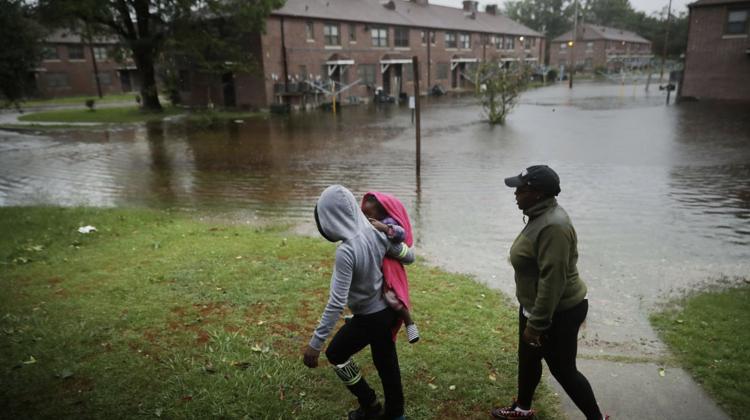Effects of Climate Change Related Disasters on Low-Income Renters

This research focuses on the impacts of climate change related disasters, particularly on low-income renters. This research seeks to understand how these acute events effect housing security as well as to design more effective policy solutions to insulate the most vulnerable from the worst impacts of climate change.
Related Publications
A Perfect Storm? Disasters and Evictions
Stable housing is a fundamental platform for individual and collective well-being, and research indicates that a significant disruptive effect of severe environmental disasters is residential displacement. Despite extensive research on the intersection of disasters and housing, the effect of major disasters on evictions remains understudied. How do landlords and renters respond to the economic dislocation that accompanies disasters and to what extent do major disasters lead to evictions? To answer these questions, we adopt a mixed methods approach. Analyzing county-level data on evictions and disasters between 2000 and 2016, we find that disasters are associated with significant increases in evictions in the year of a disaster and the two years following a disaster and that increases in the housing cost burden are associated with higher eviction rates. We complement these quantitative findings with qualitative interviews and archival analysis from Panama City, Florida in the year after Hurricane Michael. The qualitative findings suggest that eviction dynamics may differ by landlord size and identify challenges for small landlords accessing federal assistance, particularly because of clouded titles from unrecorded property transfers. Together, the findings indicate that disasters increase evictions and lead to significant disruption for many low-income tenants for years after the disaster.
In Harm's Way? The Effect of Disasters on the Magnitude and Location of Low-Income Housing Tax Credit Allocations
This paper analyzes the effect of disasters on affordable housing construction. Exploiting the exogenous timing of disasters and 26 years of affordable housing data, we derive causal estimates of the effect of severe floods on county-level Low-Income Housing Tax Credit (LIHTC) allocations nationwide. We find that states respond to severe floods by increasing the number of LIHTC units per capita allocated to a flood-struck county by 57 percent in the year after the disaster, compared to other years. We argue that this increased allocation of LIHTC units is indicative of a process of institutional or policy conversion, in which states are repurposing the three-decade-old housing tax credit program to meet contemporary disaster assistance and recovery needs. Given that the LIHTC program was not designed with disasters in mind, do the new units ameliorate or exacerbate renters' exposure to disaster risk? We find that severe floods are associated with a significant increase in LIHTC units per capita allocated outside of the 500-year floodplain in an affected county within the three years after a severe flood. These findings suggest that states and housing developers are using the LIHTC program to support disaster recovery by expanding subsidized rental options in disaster-struck counties and ameliorating risk to low-income renters by locating those units outside of floodplains.
Affordable Housing, Disasters, and Social Equity: LIHTC as a Tool for Preparedness and Recovery
The Low-Income Housing Tax Credit (LIHTC) is the most common financing mechanism for subsidized housing production in America. We investigate how and to what extent states are currently using the LIHTC to prepare for and recover from disasters. We systematically code guidelines in the 2017 LIHTC qualified allocation plans from 53 states and territories to identify disaster-related provisions. Twenty-four states and territories include provisions for preparedness or recovery in their allocation plans, of which 13 include only preparedness provisions, 3 include only recovery provisions, and 8 include both types. Preparedness provisions address project design and siting, whereas recovery provisions direct credits to disaster-affected areas or the replacement of damaged units. Using t tests, we compare three sets of states—those without any disaster-related provisions, those with either preparedness or recovery provisions, and those with both types of provisions—across measures of housing cost, demographic composition, disaster exposure, and political ideology. States with higher homeownership rates, lower home values, and lower rents are more likely than other states to have either or both types of provisions. Future research should investigate state adoption of disaster-related LIHTC provisions to better inform affordable housing policy.


